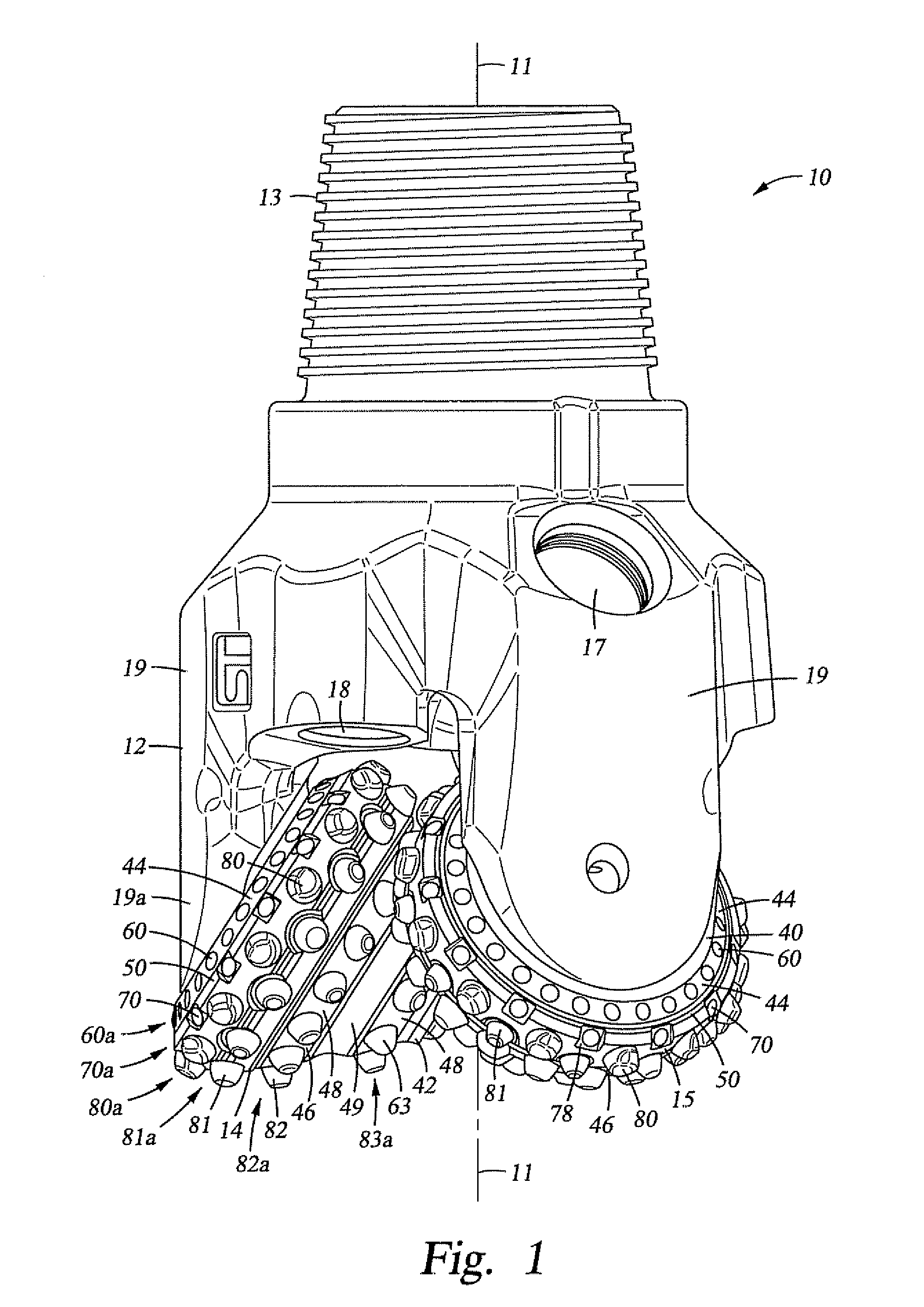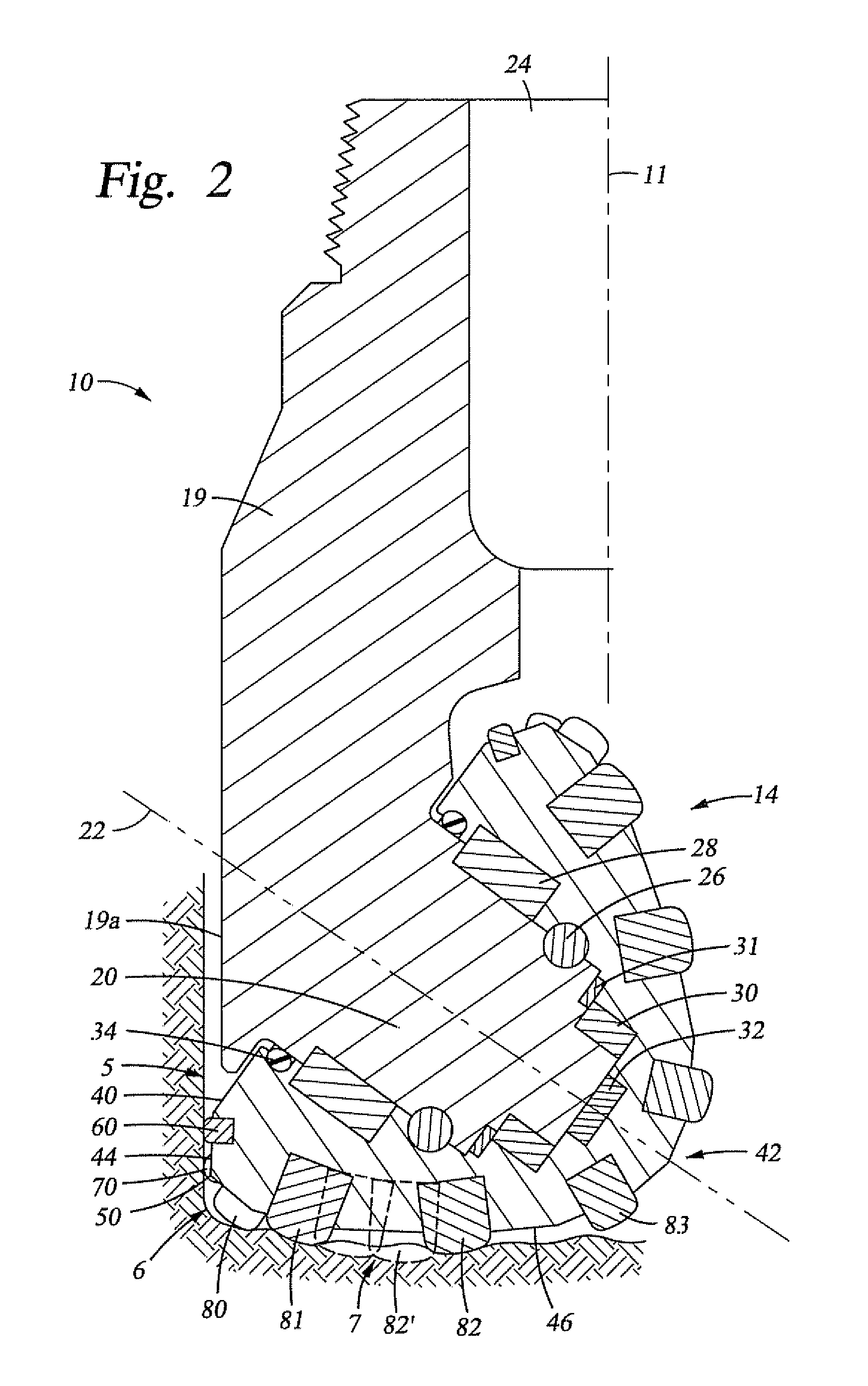Drill Bit and Cutting Inserts For Hard/Abrasive Formations
a hard/abrasive formation and drill bit technology, applied in the field of earth-moving drill bits, can solve the problems of increasing the difficulty of inserting drilling equipment into the borehole, increasing the cost of drilling equipment, so as to improve the rop, reduce the wear rate, and improve the durability
- Summary
- Abstract
- Description
- Claims
- Application Information
AI Technical Summary
Benefits of technology
Problems solved by technology
Method used
Image
Examples
Embodiment Construction
[0014] These and other needs in the art are addressed in one embodiment by a rolling cone drill bit for drilling a borehole in earthen formations. In an embodiment, the bit comprises a bit body having a bit axis. In addition, the bit comprises at least one rolling cone cutter mounted on the bit body for rotation about a cone axis and having a first surface for cutting the borehole bottom and second surface for cutting the borehole sidewall. Further, the bit comprises a plurality of cutter elements secured to the cone cutter and extending from the first surface and positioned in a first circumferential row, wherein at least one of the cutter elements comprises a cutter element axis, a base portion having a diameter, and a cutting portion extending from the base portion to a point furthermost from the base portion defining an extension height. Still further, the ratio of the cross-sectional area of the cutter element defined by a plane perpendicular to the cutter element axis at a poi...
PUM
 Login to View More
Login to View More Abstract
Description
Claims
Application Information
 Login to View More
Login to View More - R&D
- Intellectual Property
- Life Sciences
- Materials
- Tech Scout
- Unparalleled Data Quality
- Higher Quality Content
- 60% Fewer Hallucinations
Browse by: Latest US Patents, China's latest patents, Technical Efficacy Thesaurus, Application Domain, Technology Topic, Popular Technical Reports.
© 2025 PatSnap. All rights reserved.Legal|Privacy policy|Modern Slavery Act Transparency Statement|Sitemap|About US| Contact US: help@patsnap.com



